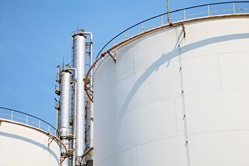
Publication
Regulatory investigations and enforcement: Key developments
The past six months have seen a number of key changes in the regulatory investigations and enforcement space.


United States | Publication | January 2021
Based on worksite inspections, the Occupational Health and Safety Administration (OSHA) has identified the 10 most frequently cited standards in order to educate employers and allow correction of potential hazards in order to eliminate excessive injuries and illnesses. Notably, these include fall protection, scaffolding and ladders at construction sites; the federal Hazard Communication Standard (HAZCOM); personal protective and respiratory equipment; hazardous energy control (lockout/tagout); and machine guarding.
Separately, OSHA has announced those OSHA standards most frequently the subject of its COVID-related workplace investigations. Not surprisingly, these include respiratory protection (medical evaluation, fit testing, training and the overall protection program); recording and reporting of occupational injuries and illnesses; other personal protective equipment; and, of course, the catch-all of the General Duty Clause (“the employer did not furnish a place of employment that was free from recognized hazards that are causing or are likely to cause death or serious physical harm to employees”). Accompanying this announcement are OSHA’s Lessons Learned recommendations to employers to avoid citations for such violations.
In light of COVID’s outsized effects on the elderly and infirm, OSHA has also issued Respiratory Protection Guidance for employers of those working in nursing homes and assisted and other long-term care facilities. This advises on the distinctions among various types of masks and other face coverings, and provides structure for such entities’ Respiratory Protection Programs. It also discusses OSHA’s enforcement discretion when evaluating an employer’s good faith in endeavoring to comply with OSHA standards.

Publication
The past six months have seen a number of key changes in the regulatory investigations and enforcement space.

Publication
Low carbon projects, especially those involving hydrogen and carbon capture and storage (CCS), play a crucial role in the journey towards global decarbonization.
Publication
As a general remark, Indonesia has not, at the date of preparing this summary, issued any regulation on hydrogen production, distribution and trade. It is expected that the upcoming New and Renewable Energy Law will provide a legal framework for the exploitation and utilisation of various new energy sources, including hydrogen.
Subscribe and stay up to date with the latest legal news, information and events . . .
© Norton Rose Fulbright LLP 2025